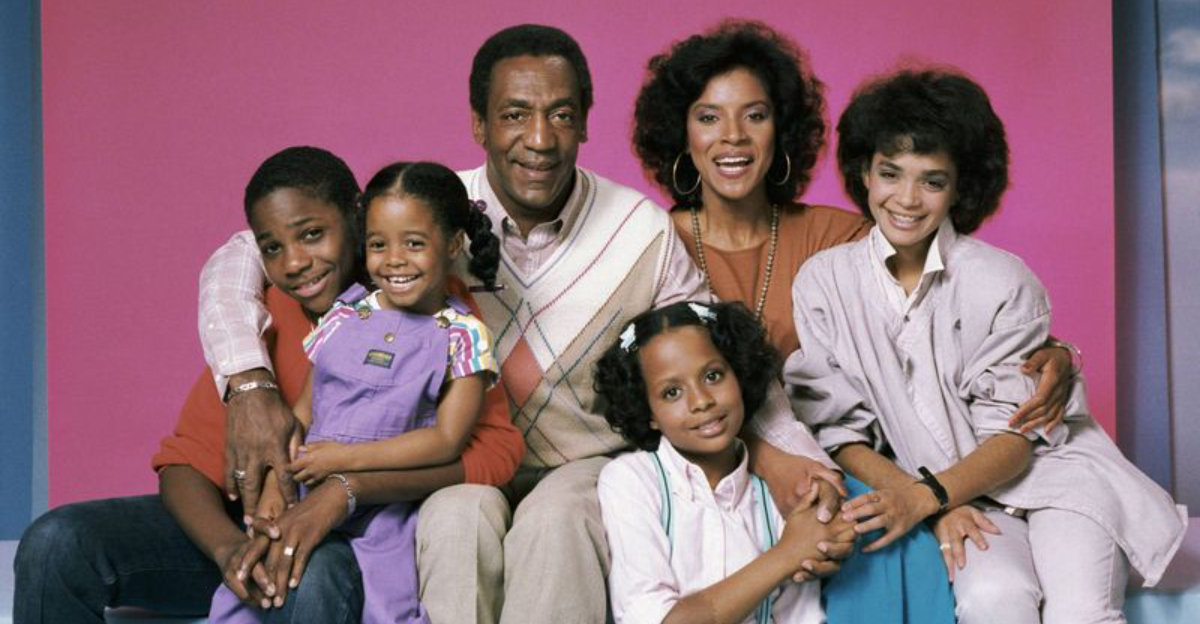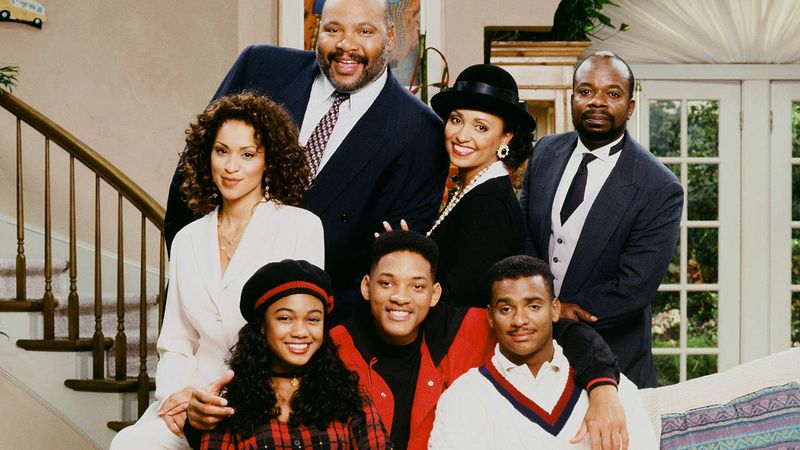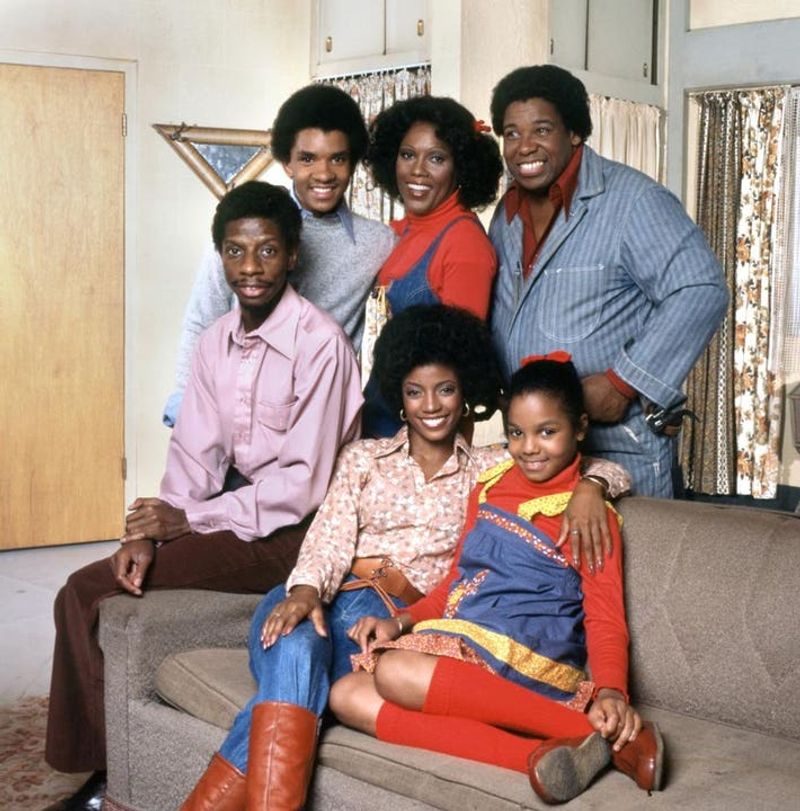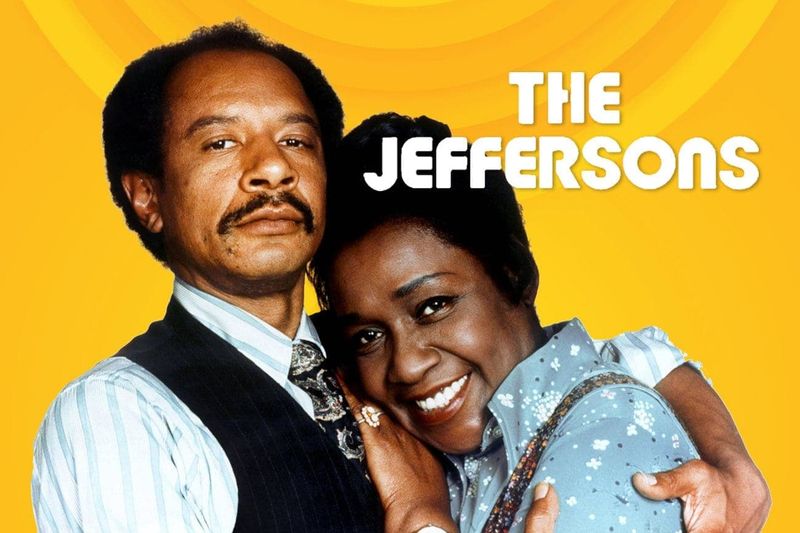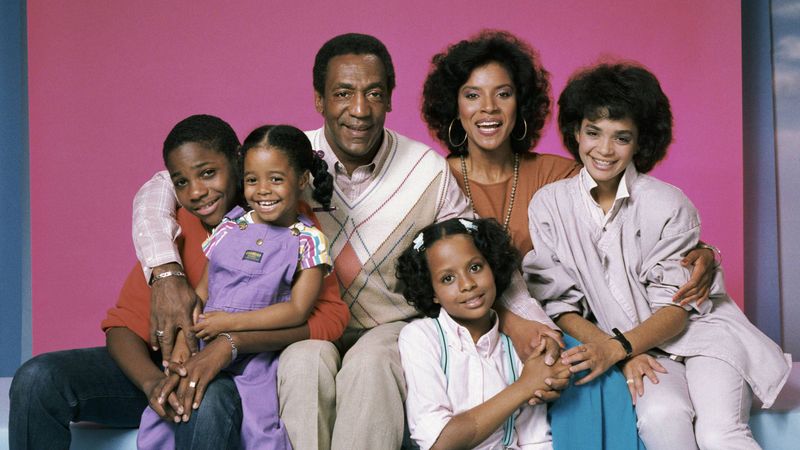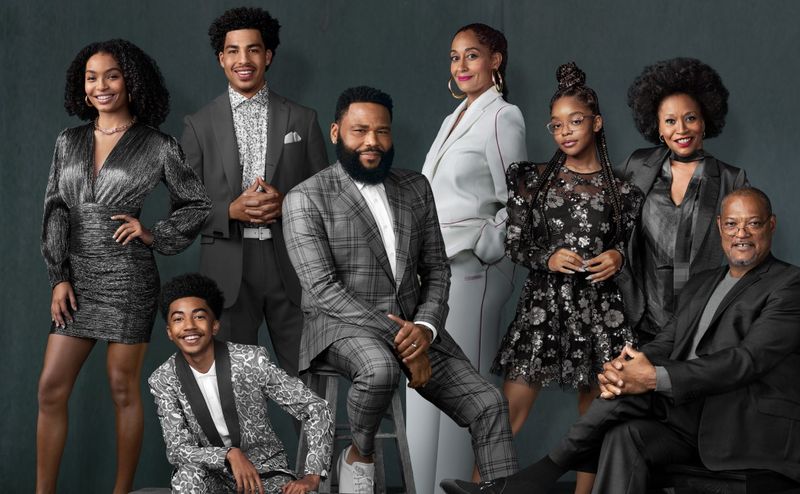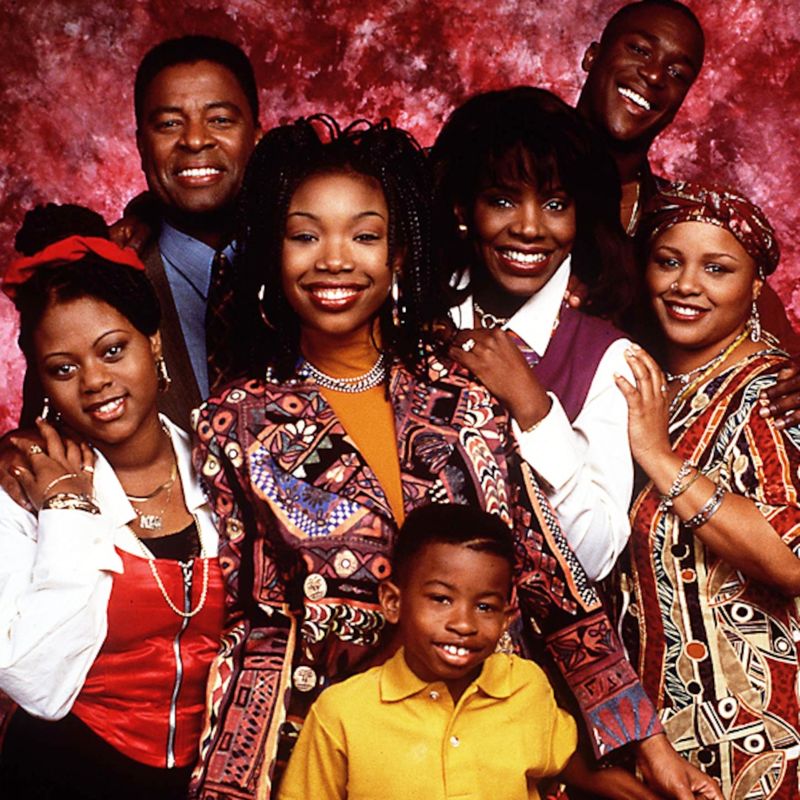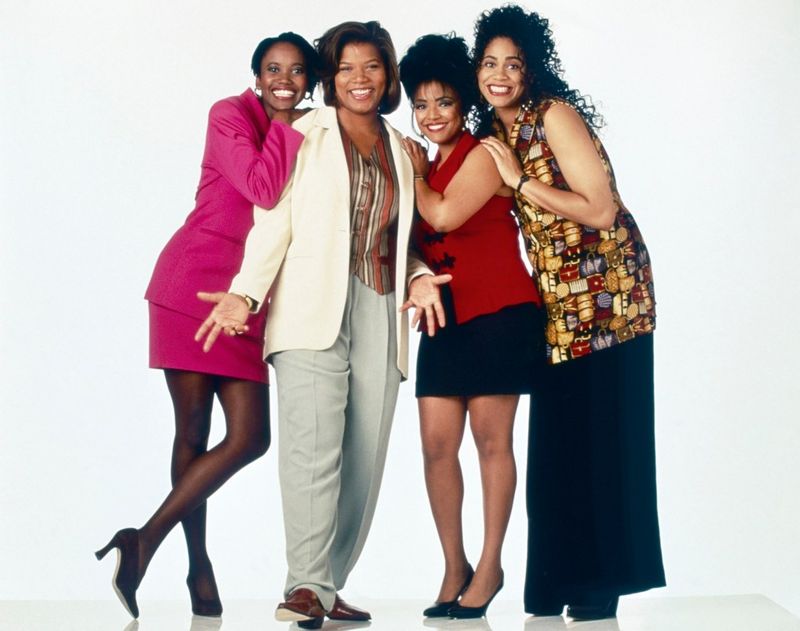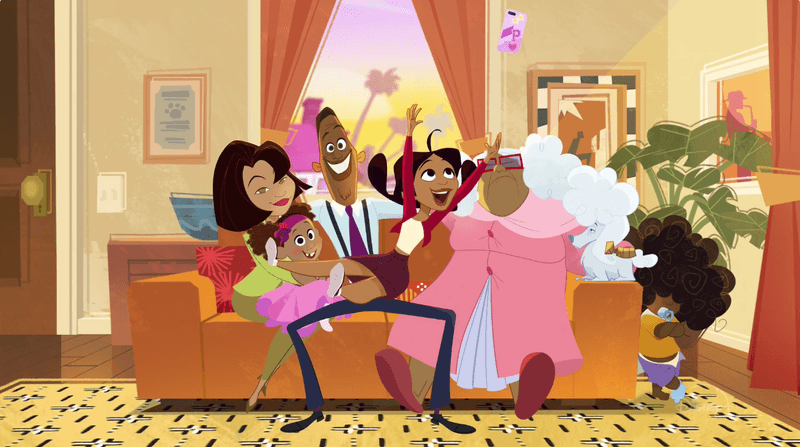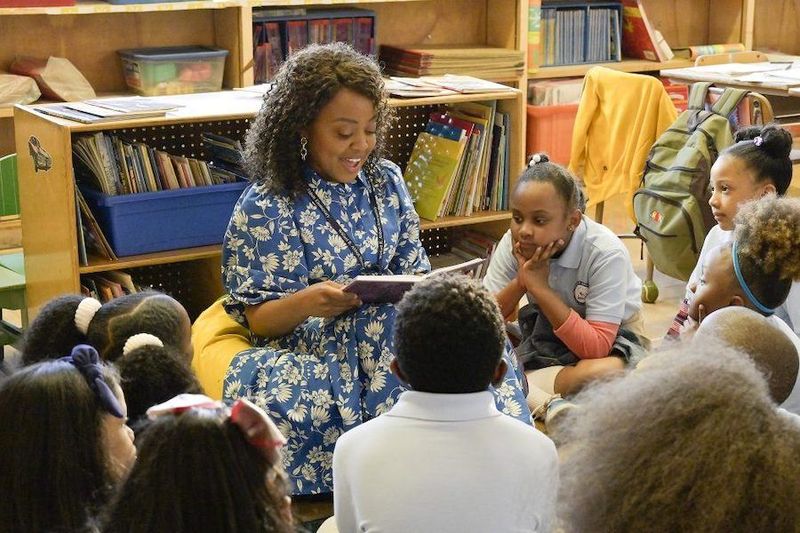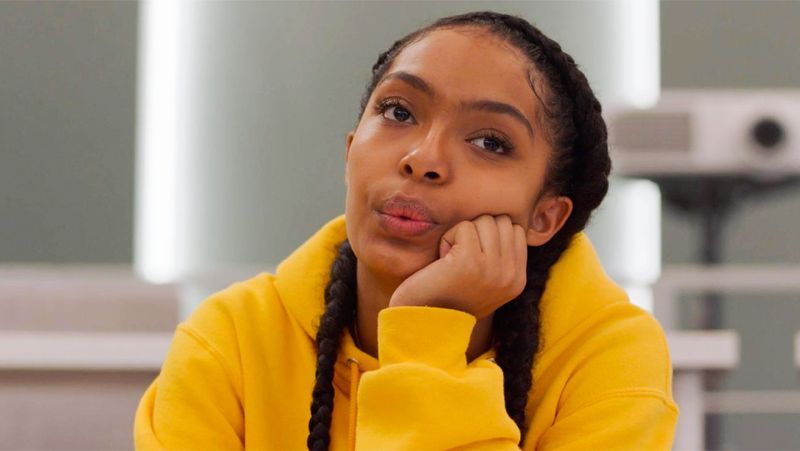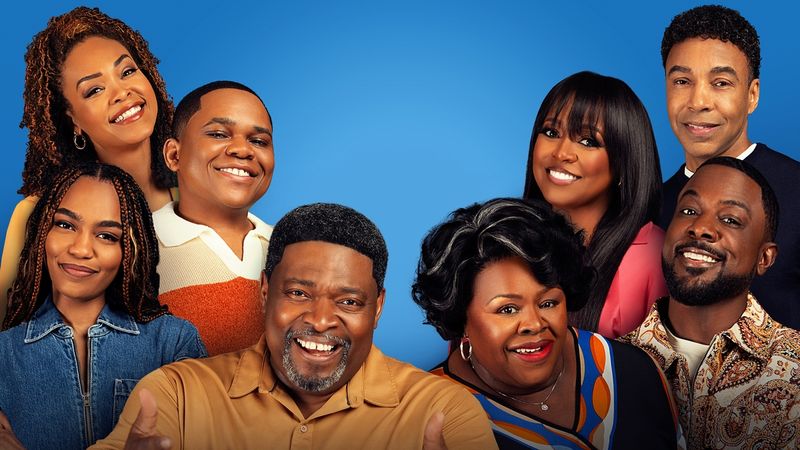Black family TV shows have changed how we see ourselves on screen. These programs brought laughter, tears, and important conversations into our living rooms for decades. From groundbreaking 70s sitcoms to today’s award-winning series, these shows have given us characters that feel like our own family members while breaking down barriers in the entertainment world.
1. Family Matters (1989-1998)
Steve Urkel’s nasally question “Did I do that?” became a cultural phenomenon nobody saw coming. What began as a spin-off of Perfect Strangers evolved into a showcase for Jaleel White’s suspender-wearing, accident-prone neighbor who stole the spotlight from the actual stars – the hardworking Winslow family. Police officer Carl Winslow, elevator operator Harriette, and their three children navigated life’s challenges with humor and heart. The show brilliantly balanced slapstick comedy with serious topics like racism and gun violence. Family Matters holds the distinction of being the second-longest-running sitcom with a predominantly Black cast. Its enduring popularity proved that Black family stories could sustain nearly a decade of primetime success.
2. The Fresh Prince of Bel-Air (1990-1996)
A West Philadelphia playground became the unlikely launchpad for television history when Will Smith’s character moved across the country to live with wealthy relatives. The fish-out-of-water premise created perfect comedic tension between street-smart Will and his buttoned-up Uncle Phil. Behind the neon clothes and Carlton’s infamous dance moves lay a show unafraid to tackle serious issues. Episodes addressing racism, class differences, and absent fathers showed remarkable depth for a primetime sitcom. The Banks family mansion became a backdrop for exploring Black identity across socioeconomic lines. Few shows have matched its cultural staying power – from its instantly recognizable theme song to its emotional moments that still resonate with viewers decades later.
3. Good Times (1974-1979)
“Dy-no-mite!” J.J. Evans’ catchphrase echoed through living rooms nationwide, but Good Times offered much more than memorable one-liners. Set in Chicago’s Cabrini-Green housing projects, the Evans family’s struggle to survive poverty while maintaining dignity broke new ground for television. Florida and James Evans worked tirelessly to provide for their three children despite endless setbacks. The show’s groundbreaking portrayal of a loving, intact working-class Black family challenged stereotypes while acknowledging harsh economic realities. Beyond the laughs, Good Times confronted unemployment, discrimination, and urban housing conditions with unprecedented honesty. Its willingness to show both the struggles and the joy of Black family life in the 1970s created a template for authentic storytelling that influenced generations of shows.
4. The Jeffersons (1975-1985)
George Jefferson strutted into television history with an attitude as crisp as his tailored suits. As a successful dry cleaning business owner who moved his family from Queens to a luxury Manhattan high-rise, he embodied Black entrepreneurial success during a pivotal era. The chemistry between opinionated George and his level-headed wife Louise created comedy gold for eleven seasons. Their interracial neighbors, outspoken maid Florence, and eccentric British neighbor Mr. Bentley formed one of television’s most memorable supporting casts. The Jeffersons broke barriers by featuring television’s first married interracial couple and openly discussing racism, classism, and the complexities of upward mobility. That iconic theme song about “movin’ on up” wasn’t just catchy – it represented the aspirational possibilities opening for Black Americans.
5. The Cosby Show (1984-1992)
Dr. Cliff Huxtable and his attorney wife Clair raised their five children with equal parts humor and wisdom in this revolutionary sitcom. Never before had television portrayed a successful, upper-middle-class Black family with such authenticity and universal appeal. Thursday nights belonged to the Huxtables for eight glorious seasons. The show’s magic came from balancing everyday family situations with thoughtful discussions about education, relationships, and growing up. The series changed television forever by proving Black family stories could dominate ratings while challenging persistent stereotypes. Its cultural impact remains significant, showing generations of viewers that Black excellence was both achievable and worth celebrating.
6. Black-ish (2014-2022)
Marketing executive Andre Johnson worried his family had lost touch with their cultural roots while living in an affluent, predominantly white neighborhood. His humorous attempts to reconnect them with Black culture sparked conversations in living rooms across America about racial identity in the 21st century. Creator Kenya Barris masterfully balanced laugh-out-loud comedy with unflinching examinations of police brutality, colorism, and the complexities of raising Black children in predominantly white spaces. The Johnson family’s four generations offered diverse perspectives on what Blackness means in modern America. Black-ish earned critical acclaim for episodes like “Juneteenth” and “Hope” that addressed historical and contemporary racial issues with nuance rarely seen in network television. Its success spawned two spin-offs, cementing its legacy as a cornerstone of modern Black family storytelling.
7. Sister, Sister (1994-1999)
Separated at birth and reunited by chance at a shopping mall – the premise sounds like a soap opera, but in the hands of real-life twins Tia and Tamera Mowry, it became comedy gold. Their identical appearances but contrasting personalities (bookish Tia and boy-crazy Tamera) created endless opportunities for teenage hijinks. The show’s blended family dynamic added unique complexity. Tia’s practical adoptive mother Lisa and Tamera’s flamboyant adoptive father Ray reluctantly moved in together to keep the sisters united, creating an unconventional household that resonated with viewers. “Go home, Roger!” became the catchphrase shouted at their persistent neighbor, but audiences never wanted to leave the comfort of this groundbreaking series. Sister, Sister demonstrated that young Black female protagonists could carry a successful primetime show while dealing with universal coming-of-age experiences.
8. Moesha (1996-2001)
R&B sensation Brandy stepped into the role of Moesha Mitchell, a teenage girl navigating high school, friendships, and family dynamics in Los Angeles’ Leimert Park neighborhood. Her journal entries framed episodes that tackled everything from dating dilemmas to deeper issues like substance abuse and teen pregnancy. Moesha’s relationship with her strict father Frank and new stepmother Dee created realistic family tension rarely portrayed from a young Black woman’s perspective. Her tight-knit friend group including best friend Kim and neighbor Hakeem showed the importance of community beyond blood relations. The series broke ground by centering a young Black female protagonist during an era when such representation was scarce. Its authentic portrayal of 90s Black teenage life, complete with fashion, slang, and music of the era, created a time capsule that continues to resonate with new generations discovering the show.
9. Everybody Hates Chris (2005-2009)
Comedian Chris Rock’s childhood in 1980s Brooklyn became the foundation for this nostalgic yet unflinching look at growing up working class. Young Chris, the responsible oldest child, navigated being bused to a predominantly white school while helping his parents stretch every penny at home. Terry Crews as frugal father Julius and Tichina Arnold as strict mother Rochelle created some of television’s most memorable parenting moments. Their constant refrain “That’s a waste of money!” and creative punishment techniques resonated with anyone raised in a household where resourcefulness wasn’t optional. The show’s brilliant narration by adult Chris Rock provided both humor and historical context about growing up Black in Reagan-era America. Its unflinching look at economic struggles, racial microaggressions, and family sacrifices was revolutionary for showing the reality many families faced while still finding genuine humor in these challenges.
10. Living Single (1993-1998)
Six friends sharing two apartments in a Brooklyn brownstone created a found family that redefined Black friendship on television. Centered around magazine editor Khadijah James (Queen Latifah), the show portrayed young Black professionals navigating careers, relationships, and personal growth in early 90s New York. The dynamic between roommates – materialistic Regine, ditzy but sweet Synclaire, and sharp-tongued lawyer Maxine – created perfect comedic chemistry. Add neighbors Kyle and Overton, and you had the blueprint for what would later inspire Friends (though rarely credited). Living Single broke ground by showing successful, college-educated Black women pursuing dreams beyond marriage and motherhood. Its portrayal of Black female friendship, complete with inside jokes, tough love, and unwavering support, created a template for authentic relationship portrayals that influenced countless shows that followed.
11. My Wife and Kids (2001-2005)
Michael Kyle’s determination to avoid his own father’s mistakes drove this family comedy starring Damon Wayans. His catchphrase “I’m gonna kill somebody!” rarely led to actual violence, but his creative punishments for his three children became legendary among viewers. The Kyle family dynamic – successful businessman Michael, beautiful and intelligent wife Janet, and their three distinctly different children – created endless comedic possibilities. From teenage daughter Claire’s dating disasters to young son Junior’s academic struggles, the show found humor in universal family challenges. The series stood out for portraying a successful Black family without making their race the central focus of every storyline. Its blend of physical comedy, heartfelt moments, and pop culture references created a show that appealed across demographics while providing much-needed representation of a loving, intact Black family headed by a present and engaged father.
12. The Proud Family (2001-2005, 2022-Present)
Fourteen-year-old Penny Proud’s animated adventures broke new ground as Disney Channel’s first animated series centered on a Black family. Her embarrassing father Oscar, supportive mother Trudy, and mischievous twin siblings created relatable family dynamics rarely seen in children’s animation. Suga Mama, Penny’s unconventional grandmother who practiced martial arts and rode a motorcycle, became an instant fan favorite. Penny’s diverse friend group addressed intersectionality before the term entered mainstream vocabulary, featuring characters from various cultural backgrounds. The original series tackled issues like cultural appropriation and discrimination with age-appropriate humor. Its 2022 revival, “The Proud Family: Louder and Prouder,” continued this tradition while updating storylines to include modern topics like social media and gender identity, proving the timeless appeal of the Proud family’s multigenerational household.
13. Abbott Elementary (2021-Present)
Janine Teagues believes passionately in public education despite teaching in an underfunded Philadelphia school where the lights randomly shut off and supplies are perpetually scarce. Creator Quinta Brunson’s workplace mockumentary showcases dedicated teachers forming a surrogate family while serving predominantly Black students. The show’s brilliance lies in finding humor without mocking the serious issues facing urban education. Veteran teachers Barbara and Melissa, young principal Ava, and socially awkward janitor Mr. Johnson create a workplace ensemble that feels authentically familial in their dysfunctional yet caring relationships. Abbott Elementary made history by winning three Emmy Awards in its first season – a remarkable achievement for a network comedy with a predominantly Black cast. Its portrayal of educators going above and beyond for their students while forming meaningful connections with each other offers a heartwarming testament to the families we create in our workplaces.
14. Grown-ish (2018-2024)
College freshman Zoey Johnson discovered independence wasn’t quite as glamorous as she imagined when she left her parents’ watchful eyes. This Black-ish spinoff followed the eldest Johnson daughter navigating higher education at fictional California University with a diverse group of friends who became her chosen family. Yara Shahidi brought depth to Zoey’s journey from self-absorbed teenager to socially conscious young adult. The show distinguished itself by tackling uniquely Gen-Z issues like social media addiction and cancel culture alongside timeless college experiences like all-nighters and relationship drama. The series excelled at portraying the transitional period when young adults form identities separate from their families of origin. Its examination of contemporary campus life – from drug use to political activism – created an authentic portrayal of Black collegiate experience rarely seen on mainstream television, earning praise for its nuanced approach to coming-of-age storytelling.
15. Tyler Perry’s House of Payne (2007-2012, 2020-Present)
Fire chief Curtis Payne never expected his quiet retirement years would include a full house of extended family members. When his nephew C.J.’s family loses their home in a fire, the Payne household expands overnight, creating a multigenerational comedy with dramatic undertones. LaVan Davis brought cantankerous Uncle Curtis to life with perfect comedic timing. His constant bickering with wife Ella masked deep love, while their interactions with C.J., his wife Janine, and their children created authentic family dynamics rarely portrayed across three generations of a Black family. With over 250 episodes, House of Payne became one of the longest-running Black family sitcoms in television history. The show’s willingness to address serious issues like drug addiction, domestic violence, and health crises within a comedy framework demonstrated Tyler Perry’s understanding of how Black families often use humor to navigate life’s most difficult challenges.
